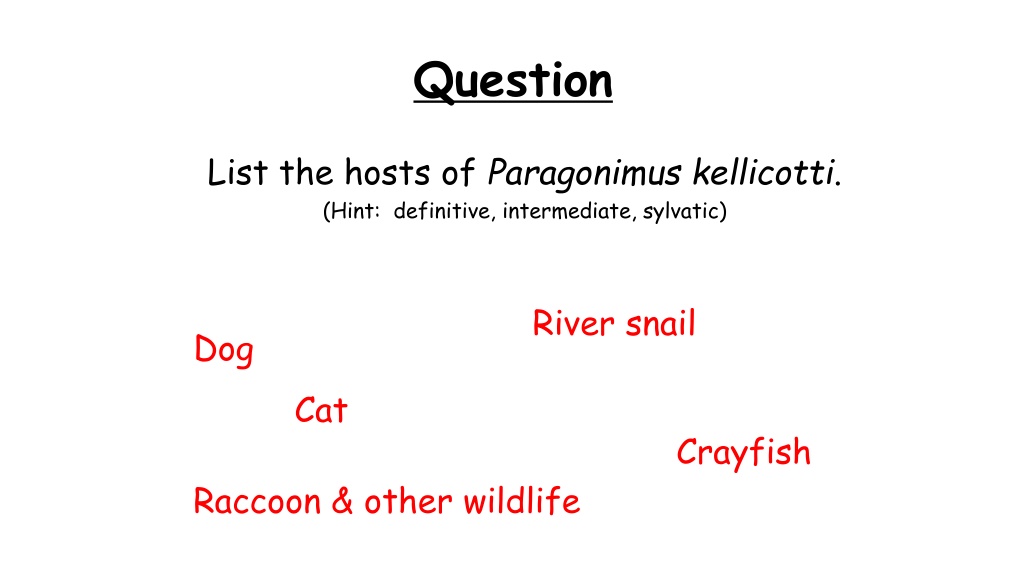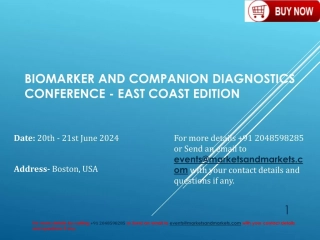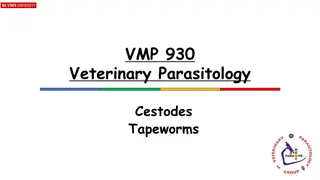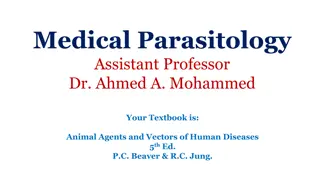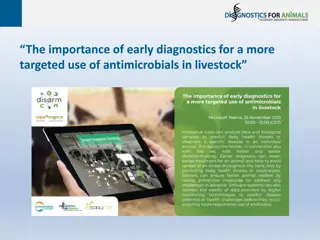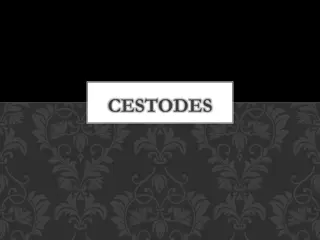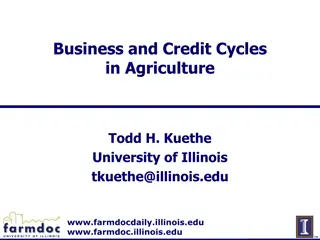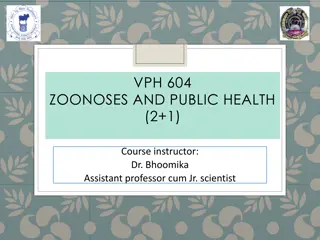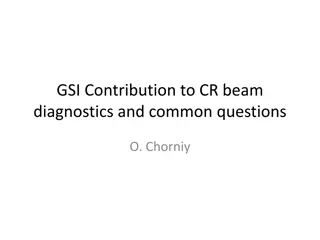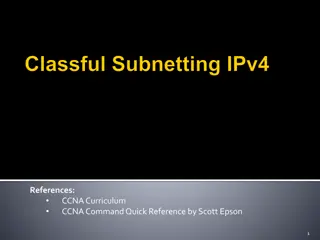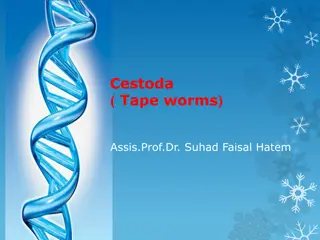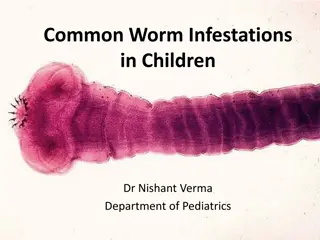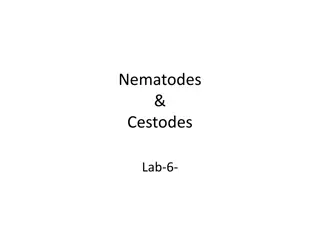Trematodes and Cestodes: Hosts, Life Cycles, and Diagnostics
Explore the hosts of Paragonimus kellicotti, match flukes with their intermediate hosts, identify flukes causing respiratory signs, learn diagnostic techniques for trematode parasites, and understand the ecological relationship between hosts. Dive into the intriguing world of digenetic trematodes and cestodes.
Download Presentation

Please find below an Image/Link to download the presentation.
The content on the website is provided AS IS for your information and personal use only. It may not be sold, licensed, or shared on other websites without obtaining consent from the author. Download presentation by click this link. If you encounter any issues during the download, it is possible that the publisher has removed the file from their server.
E N D
Presentation Transcript
Question List the hosts of Paragonimus kellicotti. (Hint: definitive, intermediate, sylvatic) River snail Dog Cat Crayfish Raccoon & other wildlife
Question Second Intermediate Host: One often controls fluke infections by not allowing access to the 2nd intermediate host. Match the Fluke with its 2nd intermediate host. D E ____ 1.Fasciola ____ 2.Heterobilharzia C A. Crayfish B.Snail ____ 3.Dicrocoelium ____ 4.Paragonimus ____ 5.Fascioloides ____ 6. First Intermediate host B C. Ant D. Aquatic Vegetation E. No 2nd intermediate host A D
Question This fluke often causes respiratory signs such as cough, but in rare cases this fluke can also cause acute pneumothorax and death. A. Fasciola B. Acanthatrium C. Nanophyetus D. Paragonimus E. Dicrocoelium
Question Which is the standard diagnostic technique when trematode parasites are suspect? A. McMasters B. Fecal Float Centrifugation C. Passive Fecal Float D. Fecal Sedimentation E. FAMACHA
Question 1. What is the ecological relationship between the definitive host and the intermediate host of most digenetic trematodes (and cestodes)? Predator / Prey relationship Predation
Question 2. Which one of the following is a good general statement about the life cycle of digenetic trematodes ? A. The infective (metacercarial) stage always encysts on aquatic vegetation. B. The miracidial stage is always aquatic: hatching from the ova and swimming to its next host. C. A snail intermediate host is required. D. The second intermediate host is always a vertebrate. E. The adult fluke is always found in the small intestine of the definitive host.
